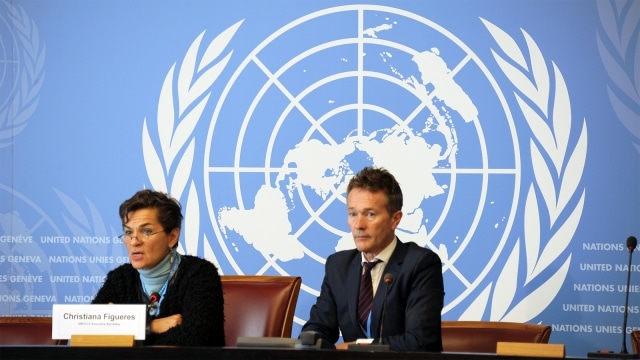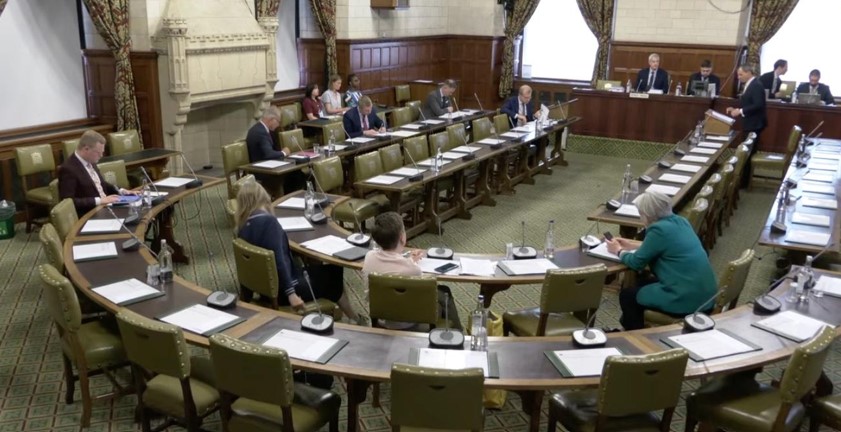The world’s biggest economies are beginning to match the climate action of early movers such as Germany and California, sensing economic opportunities and a political prize, to lead public support for an international agreement to be reached in Paris at the end of the year, writes Michael Jacobs, Senior Advisor for the New Climate Economy project
Until now, only a handful of countries and regions have truly overhauled their energy systems, in line with an internationally agreed target to limit global average warming to no more than 2 degrees Celsius.
Great effort and urgency is now required to meet the 2C target, and avoid more dangerous extreme weather and sea level rise, as described by the UN’s Intergovernmental Panel on Climate Change last year. But the target is not out of reach.
Early Movers
One early mover has been Germany, and significantly so, as the world’s fourth largest economy. The speed and scale of Germany’s shift to wind and solar power is proof that a swift, low-carbon transition is neither impractical nor impossible.
Last year, non-hydro renewables including biomass, wind and solar power accounted for more than a quarter of Germany’s electricity consumption. That is four times their share a decade ago, show data from the Fraunhofer Institute for Solar Energy Systems.
In addition, Germany’s deft management of the recent G7 meeting saw the group commit to a decarbonisation goal which is an important milestone on the way to a Paris deal later this year. This goal sends an important signal to businesses and investors of the low carbon direction for the global economy.
In California, a U.S. state equivalent to the world’s seventh biggest economy, electricity from non-hydro renewables now also accounts for more than a quarter of total generation, a share which has doubled in the past 10 years.
And across the whole of the United States, renewables last year reached their highest share of total energy consumption since the 1930s, when gas guzzling SUVs were unheard of and wood was still a significant source of energy.
The share of renewables has now risen to a tenth of all U.S. energy consumption, including electricity, transport and heating, from 6 percent a decade ago. That growth is still too slow.
But there are signs that the world’s biggest players, including both China and the United States, are stepping up their efforts ahead of the Paris climate summit.
China and America
All countries have agreed to submit pledges for climate action, in Paris, under an international agreement which is vital to align countries, investors, businesses, local governments and citizens on a global path for near zero greenhouse gas emissions later this century.
China has said it is committed to fight climate change, saying it “will advance a revolution in energy production and consumption, cap total energy consumption, raise energy efficiency and vigorously develop non-fossil fuels”.
China’s new ambition reflects public pressure to address worries over toxic air and water. According to analysis for the New Climate Economy report, “Better Growth Better Climate”, the value of damage to health from poor air quality amounts to over 10 percent of GDP in China.
We are now seeing the results of the country’s crackdown on air pollution, as the country closes coalmines and polluting coal plants, and promises coal-free energy in its capital, Beijing. Coal is the biggest source of China’s carbon emissions, and these fell last year for the first time since 1998, and continue to drop this year.
The world’s biggest emitter and second largest economy recognises it has further to go, and has proposed to increase the share of non-fossil fuels in its energy consumption to 20 percent by 2030, from less than 10 percent now, under a Paris agreement.
Meanwhile, the world’s largest economy and second biggest emitter, the United States, has proposed to more than double the pace of its annual cuts in greenhouse gas emissions over the course of the next decade.
A new study by the Washington-based World Resources Institute (WRI) shows that the United States can deliver on this target, if it strengthens and implements in full its Clean Power Plan which targets emissions in the power sector.
The country can make even bigger strides, if it exploits new opportunities in renewable energy, whose costs continue to fall, and efficiency, where fuel economy standards can drive ever bigger savings in homes, vehicles and industry.
“Our analysis shows that the United States can make deep cuts in greenhouse gas emissions while taking advantage of the economic opportunities available in a low-carbon future and providing global leadership on climate change,” the WRI authors said.
Public Pressure
The 2014 New Climate Economy report demonstrated that that governments can create more prosperous, healthier and more liveable communities by investing in low-carbon innovation, energy, transport and cities.
The sign sent to investors earlier this month by the G7 communique was a positive one
The Chinese public are the keenest of all for their country to play a leading role in a Paris agreement – as many as 60 percent favour a leadership role for China, according to a YouGov poll published on June 4.
Well over 40 percent of people from Britain, the United States, Indonesia, Australia, France and Germany also wanted their governments to play a leading role in setting ambitious targets to address climate change.
A clear majority of all people were concerned about climate change.
Simple, sensible messages are resonating with citizens, to cut poverty, clean up our air and water, and mobilise climate action which promises a safer, more secure world for our children and grandchildren. This support gives politicians an additional incentive in Paris, to head this public movement.

The views and opinions expressed in this article are his own.
Top Photo: UN Climate Change via Flickr
Subscribe to our newsletter
Stay up to date with DeSmog news and alerts







